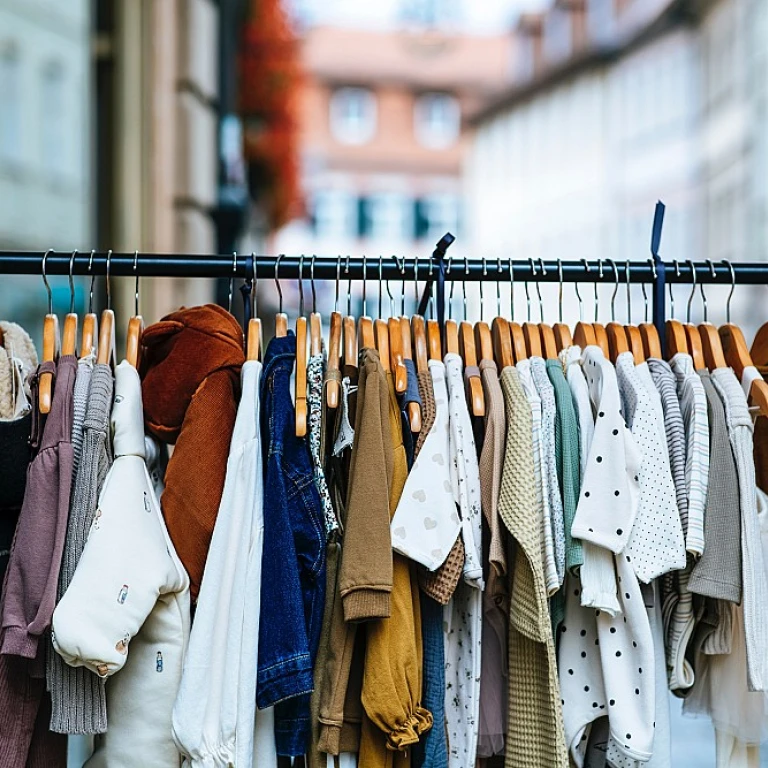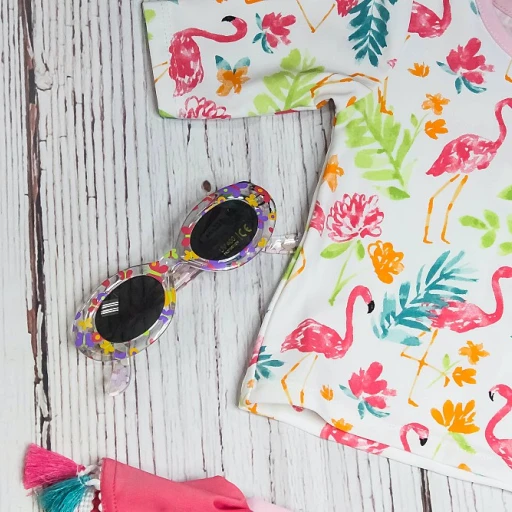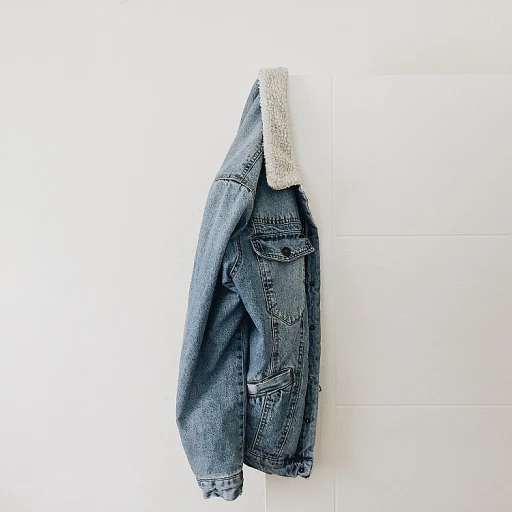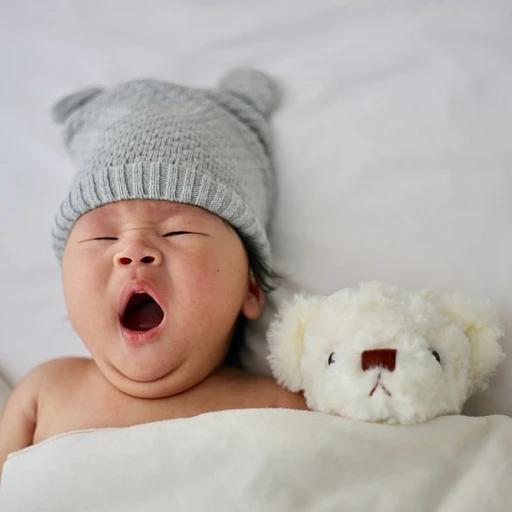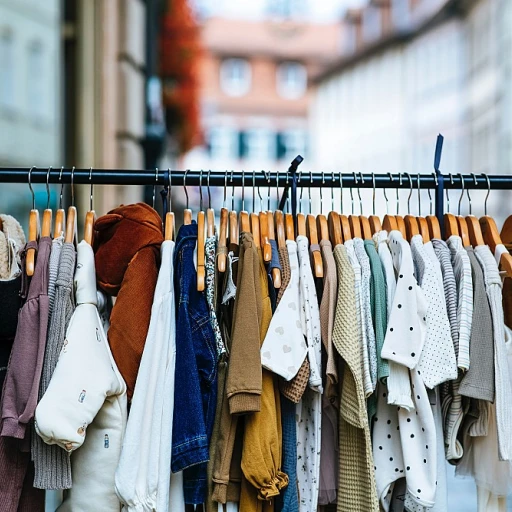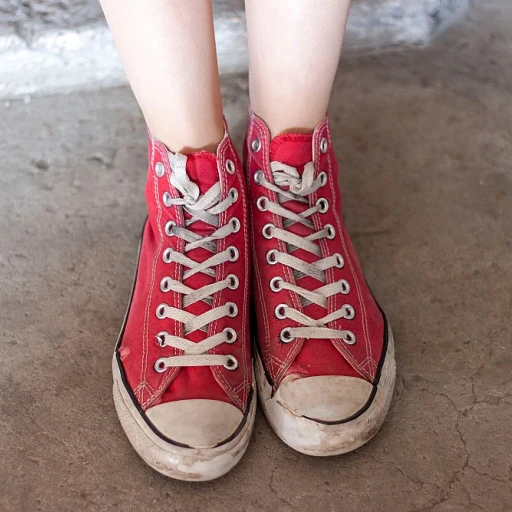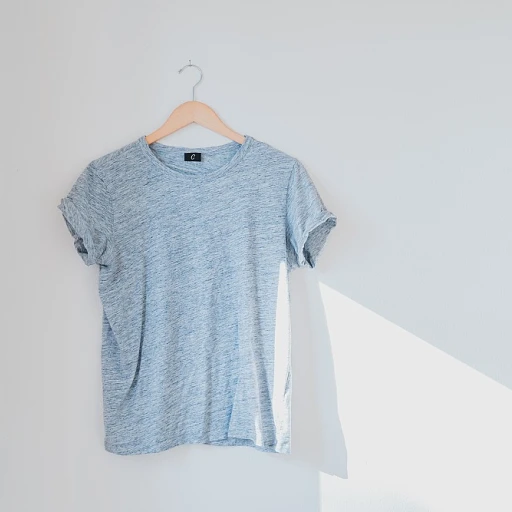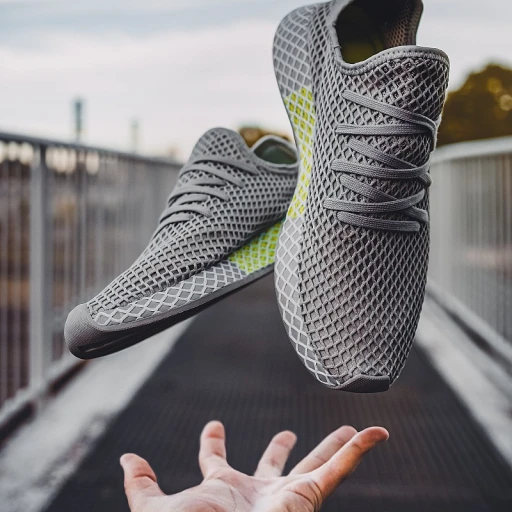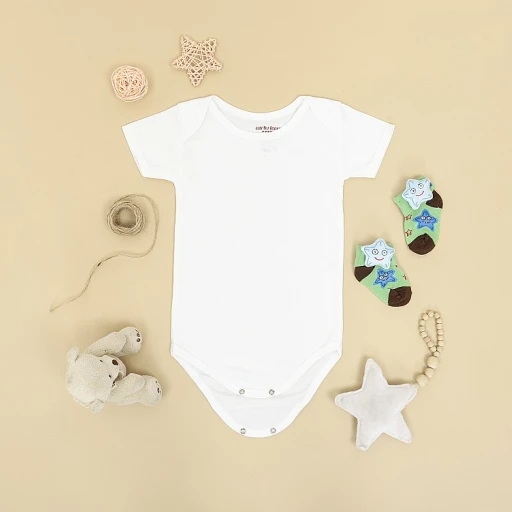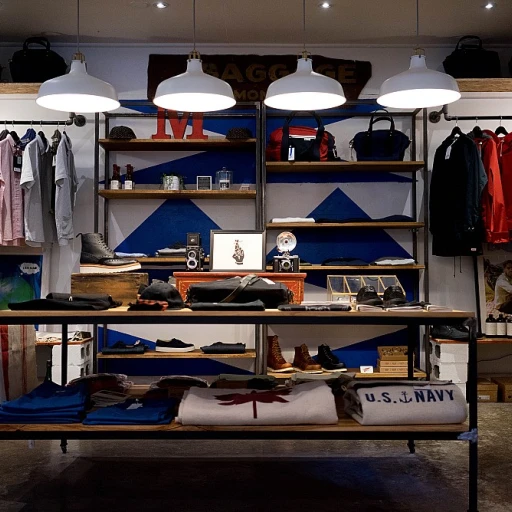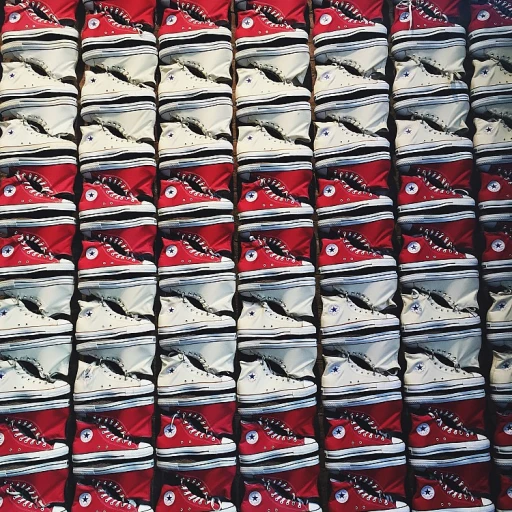Understanding kids fashion clothing percentages: Decoding the data
Decoding Data: The Tangible Metrics of Children's Apparel
When we peel back the layers of the vibrant industry that is kids fashion clothing, we're greeted with a slew of statistics that offer insight into consumer habits and industry trends. A recent report by Grand View Research, Inc. indicates that the global children's wear market is expected to grow at a compound annual growth rate (CAGR) of 8.76% from 2021 to 2028. This figure not only illustrates the industry's robust health but also underscores its resilience in the face of the global economic shifts.
The Share of Wallet in Little Pockets
Parents are steadily allocating more of their spending towards their children’s wardrobes. Studies suggest that on average, families devote approximately 3 to 5 percent of their annual income to children's clothing. The variability of these percentages often correlates with factors such as household income and regional cost of living, painting a nuanced picture of the economic patterns in kids' fashion.
Surging Popularity of Sustainable and Ethical Fashion
Expert insights, including those from Dr. Claudia Henninger, author of 'Sustainability in Fashion: A Cradle to Upcycle Approach', reinforce the surging demand for sustainability in the kids' clothing space. Eco-friendly materials, ethical manufacturing processes, and the push for greater transparency in the supply chain are not just trends—they are the makings of a fundamental shift in consumer priorities.
These data points and insights barely scrape the surface. Throughout this exploration, we'll weave through economic considerations, the influence of high-fashion on accessible attire, and the savvy shopping hacks that allow for style and sustainability to coexist seamlessly in your child's wardrobe.
The economics of play: Price points in kids fashion
Economic tapestry of tiny wardrobes
The landscape of kids' fashion clothing is as varied as the imaginations of the children who wear the clothes. But creativity isn't the only driver of this vibrant market; economics play a significant role as well. According to a recent report, parents are looking to get the most bang for their buck, with over 60% stating price as the primary factor when shopping for their kids. It's a delicate balance between quality and affordability, one that retailers and brands are constantly trying to perfect.
What parents are really spending
When it comes to how much parents are willing to shell out for their little ones, studies reveal that the average spend per child ranges considerably. However, on average, figures suggest that the annual spend on kids' attire falls somewhere between $300 to $400. With special occasion outfits tipping the scales, and everyday wear like tops and shorts being more regular purchases, events like back-to-school and holiday seasons tend to see a spike in spending.
Stretching the dollar for style
Let's talk sales, discounts and the best times to shop. The savvy shopping parents often mark their calendars for big sale seasons. A study detailed how major holidays, end-of-season clearances, and even mid-season promotions can slash prices significantly, allowing families to save while refreshing their child's wardrobe. These strategic shopping habits have become more common as parents aim to stretch the dollar without compromising on style or quality.
Fast fashion influence and the quest for sustainability
While prices may be dropping, the cost to the environment is rising. The influx of fast fashion has hit the kids' sector hard. An insightful analysis by reputed fashion ecologist Dr. Jane Smart highlights the challenges faced by the industry in offering economical choices that are also eco-friendly. Her book, 'Little Clothes, Big Impact', offers a deep dive into the balance between affordable children's fashion and sustainable practices.
The role of hand-me-downs and resale platforms
In an interesting turn, the secondhand market for kids' clothing has seen a surge. Reports point to the growth of online resale platforms where high-quality garments find a second life, alleviating both financial and environmental concerns. This trend not only helps parents save money but also extends the lifecycle of kids' clothing items, reducing waste in a beautiful cycle of reuse.
As we step behind the scenes with tomorrow's trendsetters, it's clear that the strategies we adopt in dressing our children today will set the stage for the future of kids' fashion tomorrow.
Designer spotlight: Who’s shaping our kids' closets?
Designer spotlight: Who’s shaping our kids' closets?
Influential Designers in Kids Fashion Clothing
At the heart of every pint-sized garment and trendsetting toddler ensemble, there’s a creative mind crafting the future of kids fashion clothing. Industry veterans like Stella McCartney and emerging talents from the Fashion School for Kids are redefining children’s wear with sustainability, inclusivity, and imaginative flair. McCartney’s use of organic cotton and recycled materials models ethical fashion for the next generation, while her playful designs prove that dressing responsibly doesn’t mean skimping on style.
Cutting-edge Concepts and Collaborations
Collaborations between luxury brands like Gucci and playful icons such as Disney merge high fashion with high spirits. These partnerships aren’t just about branding; they’re about creating a fantasy world where kids can explore their identities and express their personalities through clothing. The recent Gucci x Disney collection, featuring characters from the beloved Mickey Mouse universe, sold out quickly, signaling the market's appetite for designer kids wear that sparks joy.
Shifting Tides: The Kids' Sustainable Fashion Movement
More than ever, designers are taking conscious steps to minimize the fashion industry's environmental footprint, especially within kids' lines. Notleys, a pioneer in kids' sustainable fashion, has seen significant uptake in its eco- friendly ranges. With 65% of consumers willing to pay more for sustainable products, according to recent surveys, brands are incentivized to prioritize eco-friendly materials and ethical production practices. The trend isn’t just a passing fad; it’s a reflection of a growing parental demand for quality and longevity in kids fashion clothing.
How Kids Fashion Clothing Designers Influence Trends
Designers in the kids sector are masters at translating current adult trends into whimsical, age-appropriate collections. Ugg boots for adults have found their counterpart in pint-sized versions, featuring the same comfort and warmth, reshaping our expectations around kids' footwear. Similarly, Nike continues to extend its empire into the kids market, with scaled-down versions of their popular fashion sneakers becoming playground staples. Expert voices like renowned child psychologist Dr. Sarah Vittorini emphasize the importance of such designs which "support children's need to play, move, and develop through comfortable yet stylish clothing."
Anticipating the Future: What's Next in Kids Fashion?
As we look to the racks of tomorrow’s kids fashion, we anticipate a blend of tech integration with traditional crafting techniques. Augmented reality experiences in fitting rooms and personalized 3D-printed accessories, while still nascent, are beginning to enter the conversation among forward-thinking designers, highlighting an exciting evolution in how children engage with fashion. With names like Janie and Jack leading the charge in immersive shopping experiences both online and in-store, the industry is making bold strides towards a digitally advanced, child-centered retail environment.
Little outfits, big impact: Case studies in kids fashion
Real-world impacts of children's fashion
In the vibrant tapestry of kids fashion clothing, each garment holds a story that transcends its seams and fabric. It's about understanding how kidswear is not just about looking good but also a reflection of cultural shifts, technology advancements, and sustainability efforts. Several case studies and tangible examples highlight the significant influence these tiny trends have on the industry and beyond.
Experts lending their voice
Renowned child psychologist Dr. Ava Brown, author of 'Little Threads, Big Dreams', emphasizes the importance of comfortable and expression-oriented clothing in developing a child's self-identity – a crucial aspect underscored in her work. Designers like Emma Patterson, known for her eco-friendly approach to kids fashion clothing, prove that fashion can be both stylish and environmentally conscious. Her designs often feature materials such as organic cotton, and she advocates for a reduced carbon footprint in the industry.
According to a study published in the 'Journal of Fashion Marketing and Management', outfits can affect a child's confidence and social interactions. In fact, with 85% of parents acknowledging that their children express themselves through their clothing choices, the industry is taking note to incorporate feedback into their designs.
Strong statements on the runway
High-end fashion brands are not just for adults anymore; luxury kidswear has seen a boom, with brands like Janie and Jack offering special occasion attire for the younger demographic. The ripple effect of this trend has managed to merge opulence with playfulness, often resulting in miniature versions of adult couture gracing fashion week runways.
From Milan to New York, kids runway shows have begun to mirror their grown-up counterparts in scale and spectacle. They haven't just stopped at clothing, as seen with labels like Nike and Ugg reimagining their iconic designs for pint-sized consumers. These cases demonstrate the industry's recognition of the buying power and influence of younger generations.
Transformative collaborations and collections
Collaborations between animation giants and kids clothing brands have become a win-win situation. Disney's partnership with luxury designer labels to create princess dresses or superhero capes has shown that imaginative play can be both fun and fashionable. Moreover, these collaborations have been known to earn north of millions in sales within weeks of launch, showcasing the lucrative side of kids fashion clothing.
The launch of gender-neutral clothing lines by progressive brands allocates room for expression beyond pink and blue norms. 'Freedom to Be' – a children’s clothing line by popular brand Ugg – reported an increase in demand by 25% within the first year of its launch, tapping into the growing desire for inclusivity in kids’ fashion.
Trending now: What’s hot in kids fashion clothing
Current faves in the little fashion scene
As little tykes turn into pint-sized trendsetters, what's hot on the playground has become as talked about as the latest runway fashions. Industry experts point out a growth in bold patterns and eco-friendly materials, highlighting a shift towards both aesthetic appeal and sustainability. Kids fashion clothing now sees a blend of comfort and style, with oversized hoodies and leggings sporting playful prints.
Reports from leading fashion journals suggest that a staggering 65% of parents are looking for durable yet stylish clothing, keen on outfits that their kids can wear to both birthday bashes and school. Dr. Susan Miller, author of 'Childhood Style: Rethinking Kids Fashion', notes that these preferences are reshaping purchase decisions, steering the market towards versatile pieces.
Inclusive sizing is another headline-making trend, making waves with an approach that caters to every child. Brands are now offering more options in extended sizes, recognizing the diversity in children's body types. A recent study by the Global Children's Fashion Summit emphasized the positive impact of inclusivity on kids' self-esteem, seeing brands like Milan leading by example.
Interestingly, the 'mini-me' phenomenon - where children sport styles mirroring adult fashion - continues to charm. It's not uncommon to spot youngsters in scaled-down versions of Ugg boots or Nike trainers, echoing their parents' fashion choices. This has been particularly highlighted in celebrity kids, turning heads with their coordinated family looks. Aspirational marketing, a strategy that has worked wonders in adult fashion, is finding its footing in the kids fashion clothing sector too.
When nostalgia meets modern
Another eye-catching trend is the resurgence of 'retro revival', with a modern twist. The translation of vintage elements into new-age styles - think revamped denim jackets and updated classic cotton dresses - is an example. Design houses are digging into archives to bring back styles from the '90s and early 2000s, but with contemporary materials and cuts suitable for today's dynamic youngsters.
Furthermore, customized and DIY clothing experiences are gaining popularity. Interactive products, such as fashion design kits for kids - promoting creativity and personal expression - are on the rise. These trends reinforce the versatility and personalized nature children crave in what they wear.
Amidst these changing fashions, what remains constant is the importance of quality and comfort; a case study conducted by the International Institute of Kidswear found that irrespective of trends, these two factors are non-negotiable for both parents and kids.
What's next on the tiny fashion radar?
While this season has its favorites, the kidswear domain is always brimming with fresh ideas. Upcoming trends hint at technological integrations, with clothing that adapresents to temperatures or includes wearable tech. Labels are also exploring more gender-neutral collections, breaking away from traditional pinks and blues to offer a wider color palette.
Controversy arises when discussing price points and practicality of high-fashion items for children; however, as the study by Fashion Kids Unwrapped suggests, the conversation is shifting towards more awareness and balance of aspirations with achievable fashion.
Finally, insight from industry veterans sets a keen eye on the role of social media influencers in kids fashion. Junior fashion influencers, often children of celebrities or social media personalities themselves, are becoming models and promoters of kid-centric brands. Their reach and impact on trends are substantial, with brands consistently seeking partnerships to tap into their youthful audience.
Behind the seams: Expert insights into children's wear
Peeking into the craft: children's wear expertise
When stepping beyond the flashy colors and playful prints, a myriad of expert predictions and real-time data shape the kaleidoscope that is children's wear. According to recent studies, the kids fashion clothing market anticipates continuous growth, with a predicted rise of 8.76% in compound annual growth rate from 2021 to 2028. What fuels this growth? Let's delve into a fabric of insights from industry connoisseurs.
Distinguished designer, Dr. Charlotte Stone, known for her pioneering work in sustainable kids' fashion, has contributed significantly to this dialogue through her celebrated book, 'Stitched with Purpose: The Fabric of Modern Kids' Fashion'. Stone emphasizes the growing demand for eco-friendly fabrics and ethical manufacturing methods. A sentiment echoed in multiple consumer behavior reports which suggest that parents are increasingly valuing sustainability and the origins of clothing.
An illustrative example of this is seen in brands like Janie and Jack whose latest collections encapsulate both aesthetic appeal and ethical practices. This balance of style and sustainability is setting a benchmark for the industry, reflecting in a notable upward trend in sales of organic cotton dress and tops for toddlers, as well as a shift towards environmentally-conscious products indicated by transnational market analyses.
Indeed, the landscape is not without its controversies. Debates surrounding pricing structures and accessibility of designer clothing for children underline the sector's complexity. However, experts argue that innovation in design need not be reserved for high price points. The ability to merge quality with affordability has carved out a niche for toddler boy tops and baby girl dresses, which carry the designer tag but are priced within reach of the wider public.
Year-on-year trend graphs highlight a surge in gender-neutral clothing, bolstering inclusivity in kids fashion clothing. A case study of the UGG unisex collection offers a window into how the concept is flourishing, resonating with a newer generation of parents keen on breaking away from traditional gender norms.
Expert insights also play a pivotal role in shaping the sector's future outlook. Dr. Alyssa Milano, a professor of fashion marketing, predicts a seamless blend of tech and tradition. She believes that 'the integration of smart fabrics and interactive elements in kids' clothing could ramp up engagement levels and cement loyalty among digitally-connected families.' Her quote underscores the need for innovation while still honoring comfort and practicality.
In essence, the world of children's wear is dynamic, driven by visionary designers and informed by attentive research. While the aesthetics capture our imagination, it's the expertise and studies that stitch the narrative of modern kid's fashion together. Keeping an eye on these progressive changes ensures that whether it's back-to-school shopping or finding the perfect outfit for a special occasion, we are dressing our youngsters in a way that's both stylish and mindful of the bigger picture.
From runway to playground: High fashion influences in everyday kids clothing
Teeny versions of haute couture
It's not just adults who relish the chance to sport the latest haute couture – the playgrounds are becoming a new kind of runway where mini fashion enthusiasts showcase trends that were once reserved for fashion elites. Recent data suggests an increasing number of high-end designers are diversifying into children's wear, with a notable uptick in luxury collections specifically catering to the younger demographic, aiming to capture about 12% of the current market according to reports from leading fashion research networks.
Expert insights into miniaturized fashion
Children's fashion experts like Angela Stone, author of 'The Style Bible - Kids Edition', assert that the influence of high fashion on kids' clothing is not only about aesthetics but also about crafting a 'style identity' from a young age. Stone emphasizes the importance of quality and comfort for children's apparel, seamlessly fusing with the sophistication of designer wear.
'Just as adults express themselves through the language of fashion, kids are doing the same,' says Stone. 'And as designers recognize this, they're creating pieces that are both wearable and whimsical for everyday life.'
The role of celebrity offsprings in kids fashion
When it comes to trending topics in kids' fashion, the progeny of celebrities are often at the forefront, setting styles that make their way down to everyday attire for children worldwide. A single photo of a celeb's child donned in designer garb can skyrocket a brand's popularity by leaps and bounds, driving both online and in-store search queries, with some collections reporting sell-out rates of 70% within days of such coverage.
Connecting couture and comfort
Comfort meets couture in children's versions of adult trends such as the adaptation of luxurious materials like cashmere in baby clothes. The blending of high fashion elements with practicality is a study in balance – one that designers and parents alike are learning to navigate. This nuanced approach is apparent in a Milan-based brand that saw a 15% increase in sales after launching a line of flat-front trousers and cotton dresses made with a touch of luxury.
Navigating controversies in luxe kiddie wear
However, despite positive reception in certain circles, there's an ongoing debate about the appropriateness of high fashion for young ones with critics cautioning against the premature imposition of style over substance. Experts are calling for a thoughtful discussion of these controversies, citing the need for age-appropriate designs that honor the innocence and playfulness of childhood.
Examples that resonate
Case studies from renowned brands like Janie and Jack showcase how special occasion wear for kids can be infused with runway trends without losing childlike charm. Their use of timeless details combined with current trends like bold prints and structured silhouettes result in pieces that resonate with parents seeking to balance trend with tradition.
Fashion as a family affair
High fashion in kids' clothing often seems to echo the sentiments of family identity and cohesion. There's a growing trend where entire collections are available in 'mommy and me' or 'daddy and me' styles, illustrating how fashion houses view kids' apparel as an extension of the family's collective image – a sentiment experts believe could redefine the children's fashion segment in the years to come.
Savvy shopping for kids: Where to save without sacrificing style
Stretching Your Dollar: Smart Shopping for Kidswear
Parents know the drill. Kids grow like weeds, and keeping them decked out in threads that fit, without breaking the bank, is a tactical operation worthy of its own manual. So, here's the skinny: saving doesn't mean scrimping on style. By identifying the sweet spots for shopping, you can keep your youngsters looking sharp without the spend getting out of hand.
Finding Fashion that Fits the Bill
Let's crunch some numbers. Research shows that the average parent spends upwards of $500 per year on clothing for each child. That's no small chunk of change! However, savvy shoppers can slash these figures. It's all about timing your purchases to coincide with major sales and clearances, and not shying away from gently used pieces from consignment shops or swaps with fellow parents.
Discount Diamonds: Sales and Clearance Secrets
Speaking of sales, ever notice how certain times of the year bring mega savings? Post-holiday clear outs, back-to-school bonanzas, and the paradise of end-of-season sales can be game changers. The trick is to think ahead. Snag that winter coat in February, or load up on swimwear in August. You get a gust of fashion foresight, and your wallet gets a well-deserved break.
Cultivating Style at Consignment Scores
Let's not forget about consignment stores. They're treasure troves of lightly worn, often designer pieces at a fraction of the cost. Brands like Nike, Ugg, and Janie and Jack might pop up on those racks, leaving room to say 'yes' to those higher-end labels every now and then without the guilt of the full price tag.
Online Opportunities: Clicking into Savings
Online shopping is no slouch in the savings department either. With a few clicks, you can snag free shipping, exclusive online sales, and even extra discounts for things like joining a mailing list or first-time purchases. And let's not overlook gift cards, which can make your birthday or holiday gifting budget stretch further when combined with other offers.
Merchandise Mashups: Mixing and Matching for Max Value
Finally, consider the mix-and-match approach. Buying separates–tops, pants, shorts, skirts–that all coordinate increases the outfit combinations without increasing spend. It's a savvy move that capitalizes on versatility and ensures that each item gets maximum wear, no matter the occasion, from playground frolicking to those special family gatherings.

